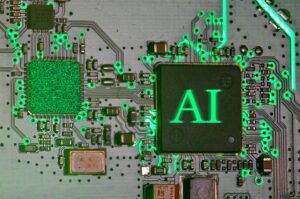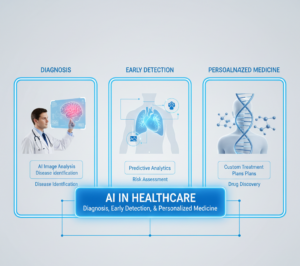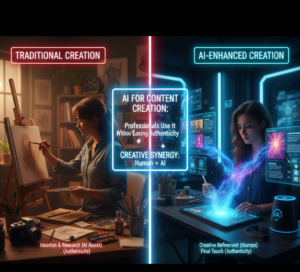How Smart Grids are Revolutionizing Energy Management with Green Tech
In an era of rapid technological advancements and increasing environmental concerns, the role of energy management has never been more crucial. Traditional energy systems, largely reliant on fossil fuels, are struggling to meet the growing demand for electricity while addressing the environmental impact. However, the rise of smart grids, powered by green technology, is transforming the way we manage energy, creating a more sustainable, efficient, and reliable energy future.
What is a Smart Grid?
A smart grid is an advanced electrical grid that uses digital technology to monitor and manage the production, distribution, and consumption of electricity. Unlike traditional grids, which operate on a one-way communication system from power plants to homes and businesses, smart grids enable two-way communication. This allows for real-time data exchange between utility companies, energy producers, and consumers, enabling better control and optimization of energy use.
At its core, the smart grid leverages modern sensors, meters, communication networks, and analytics to improve energy efficiency, integrate renewable sources, and reduce the environmental footprint. With a seamless flow of data, utilities can predict demand patterns, detect faults, and make real-time adjustments, resulting in improved grid stability and reduced energy waste.
The Role of Green Tech in Smart Grids
Green technology is at the heart of smart grid innovation. By combining renewable energy sources with advanced grid management tools, smart grids enable a transition from fossil fuels to cleaner, more sustainable energy systems. Below are some of the key green technologies that are revolutionizing energy management within smart grids:
1. Renewable Energy Integration
Smart grids are designed to accommodate a variety of renewable energy sources, such as solar, wind, hydroelectric, and geothermal. By integrating these clean energy sources, smart grids reduce the reliance on carbon-heavy fossil fuels and decrease greenhouse gas emissions. Advanced grid management systems allow for real-time balancing between renewable energy generation and demand, helping to overcome the intermittent nature of solar and wind energy.
For instance, when the sun is shining or the wind is blowing, renewable sources can provide a significant portion of the grid’s energy. Smart grids can store excess energy produced during peak renewable generation periods in batteries or other storage systems. This stored energy can then be used when renewable production is low, ensuring a stable and continuous power supply.
2. Energy Storage Solutions
One of the major challenges of renewable energy is its variability—solar and wind power are not constant. Smart grids address this issue by incorporating energy storage systems, such as advanced batteries or pumped hydro storage. These systems store surplus energy generated during periods of high renewable output and release it during peak demand or when renewable generation is low.
Energy storage also helps to mitigate fluctuations in energy prices by allowing grid operators to release stored energy when demand is high or when prices are at their peak. This is an essential feature in making renewable energy a reliable source for everyday electricity needs.
3. Demand Response Technology
Smart grids enable demand response (DR) programs, which allow utilities to remotely adjust energy consumption based on real-time data. When energy demand peaks, smart grids can send signals to connected devices in homes and businesses, asking them to reduce consumption temporarily. This helps to prevent grid overload and the need to rely on less efficient, polluting power plants.
In a demand response scenario, energy consumers can be incentivized to shift their energy usage to off-peak times, when demand is lower, reducing the strain on the grid. The smart grid continuously monitors and analyzes energy usage patterns, adjusting accordingly to maintain balance and ensure optimal energy efficiency.
4. Electric Vehicles (EVs) and Charging Infrastructure
Electric vehicles are an integral part of the green technology revolution, and smart grids are increasingly being used to support the widespread adoption of EVs. As more people turn to electric vehicles, the demand for charging infrastructure is rising. Smart grids can intelligently manage EV charging stations, balancing energy consumption and preventing grid overload.
Additionally, some smart grid systems are being designed to support vehicle-to-grid (V2G) technology, which allows EVs to not only draw power from the grid but also return surplus energy back to the grid when needed. This helps provide additional energy storage capacity and supports the overall stability of the grid, especially during peak times.
5. Energy Efficiency Through Data Analytics
Data analytics plays a pivotal role in optimizing energy usage within smart grids. By collecting and analyzing vast amounts of data from various grid components, utilities can identify inefficiencies and areas for improvement. Consumers can also gain insights into their energy usage patterns and take steps to reduce consumption.
Smart meters, for example, provide real-time feedback to consumers, showing them how much energy they are using and offering recommendations for more efficient practices. Over time, this leads to reduced energy consumption, lower utility bills, and a smaller carbon footprint.
Benefits of Smart Grids with Green Tech
The integration of green technologies within smart grids offers numerous benefits for both consumers and the environment. These include:
- Reduced Environmental Impact: By relying on renewable energy sources and improving grid efficiency, smart grids help to significantly reduce carbon emissions and other pollutants associated with traditional energy generation.
- Improved Reliability and Resilience: Smart grids can detect faults and reconfigure themselves automatically, reducing the likelihood of power outages and improving grid reliability.
- Lower Energy Costs: By optimizing energy use and incorporating demand response programs, smart grids help lower energy costs for both utilities and consumers.
- Increased Energy Access: With the ability to integrate local renewable energy production, smart grids enable greater energy access in remote or underserved areas, helping to bridge the energy divide.
The Future of Smart Grids and Green Tech
As technology continues to advance, the potential for smart grids to further revolutionize energy management is limitless. With innovations in artificial intelligence, machine learning, and Internet of Things (IoT) devices, future smart grids will be even more efficient, reliable, and sustainable. The continued expansion of renewable energy, paired with intelligent energy management systems, will pave the way for a greener, more resilient energy future.
Moreover, as the world shifts toward net-zero emissions and carbon neutrality, smart grids and green technology will be essential in achieving these ambitious climate goals. By enhancing the efficiency and sustainability of energy systems, smart grids are leading the charge in creating a cleaner, more sustainable planet for future generations.
Conclusion
Smart grids powered by green technology are not just a technological advancement—they represent a fundamental shift in how we approach energy management. By harnessing renewable energy, improving efficiency, and enabling real-time monitoring and control, smart grids are revolutionizing the way we produce, distribute, and consume electricity. The integration of green technologies in smart grids promises a sustainable, reliable, and cost-effective energy future, one where environmental impact is minimized, and the benefits are shared by all.







